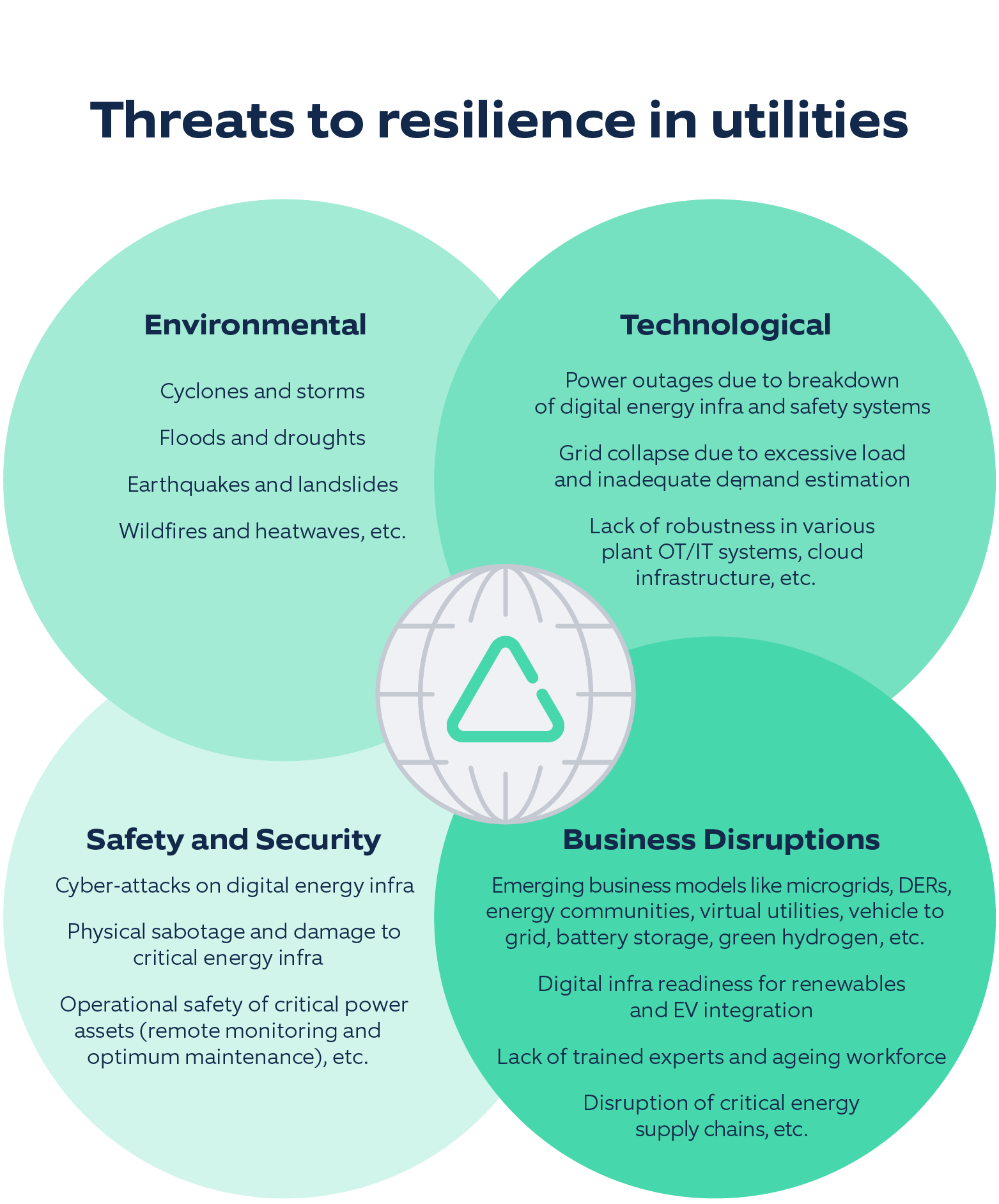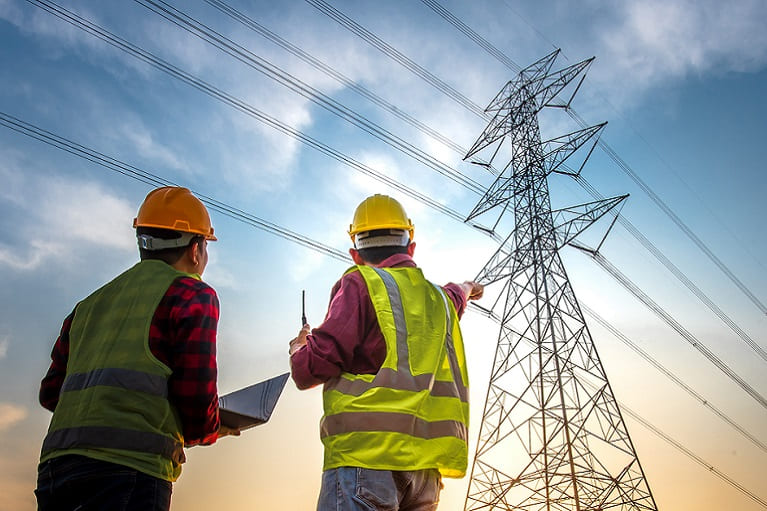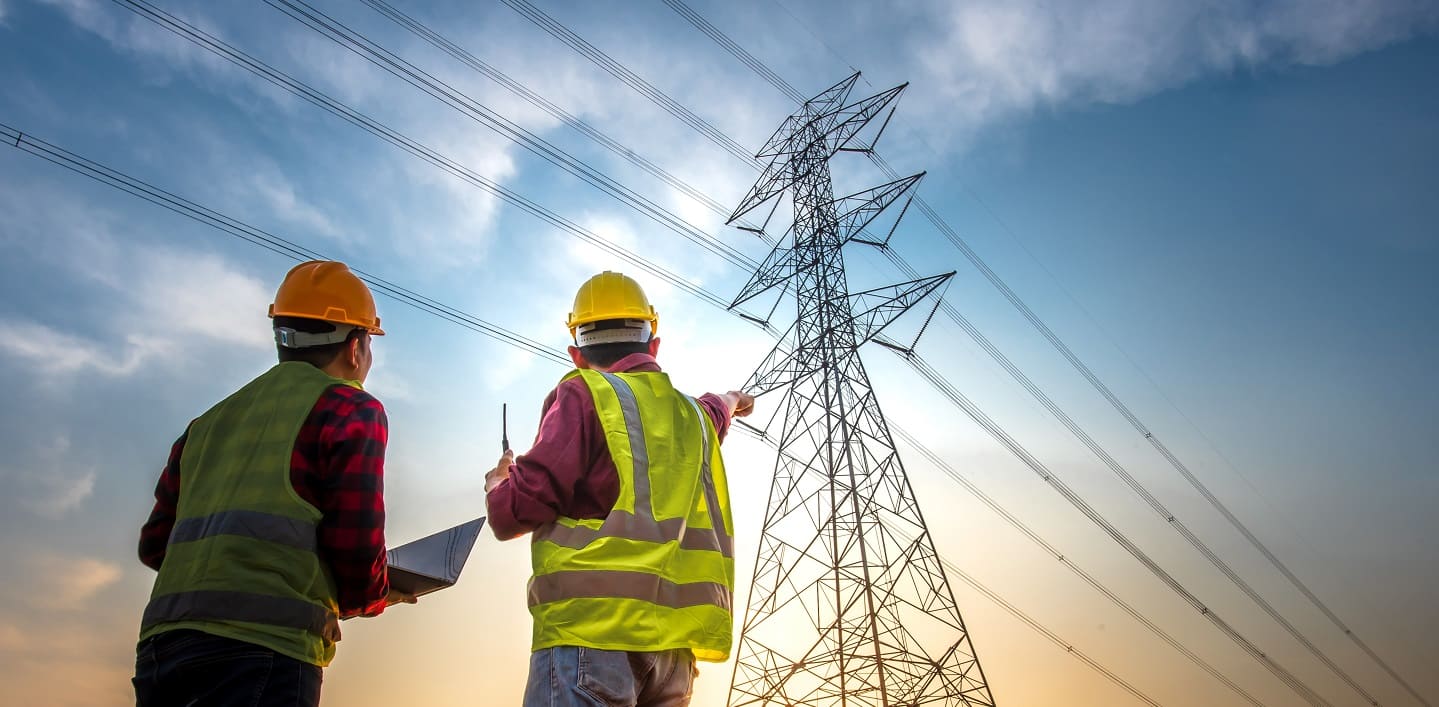Threats to the power systems and infrastructure are common and on the rise, compromising the power grid reliability and threatening our future energy security. From acute risks in the form of extreme weather events, increasing cyberattacks, and incidents of physical sabotage to more fundamental disruptions like a paradigm shift towards clean energy, and change in consumption patterns and customer needs, present-day utilities must face and prepare for a wide variety of threats.
With average global temperatures rising and the resulting push for electrification in critical and often hard to decarbonize sectors, the indirect costs of such disruptions and resulting power outages have been growing incessantly.
Speaking of extreme weather events alone, in the 2010s, the US experienced more billion-dollar disasters than in the past two decades combined—119 compared to 59 in the 2000s and 52 in the 1990s. These extreme weather events bring flooding and high winds that can cause significant damage to energy systems and infrastructure and can cost billions of dollars in losses.
Thus, power utilities today face multiple challenges from such threats and disruptions and need to develop resilience to bounce back quickly to ensure business continuity. They also need to respond to the long-term shifts in the rapidly evolving business environment to stay relevant and ahead of the competition.
These threats to business resilience in Power Utilities can be classified broadly into four buckets: Environmental, Technological, Safety and Security, and Business disruptions.

Environmental threats/challenges to power utilities
Global average temperatures are expected to increase between 1.5 and 5 degrees Celsius relative to today in many locations by 2050. This poses a slew of fresh challenges for power utilities.
The rising ambient temperatures result in decreasing thermal conversion efficiency for thermal and gas-powered plants in particular. Reduced water availability for cooling leads to reduced power operations or temporary shutdowns. Also, droughts impact reservoir levels adversely and decrease the power output from the hydropower stations.
The 2022 sea level rise technical report by NOAA projects that the global sea levels will rise by 30 cm by 2050 and 110 cm by 2100, which will have several repercussions, particularly on coastal locations. Such impacts include increased coastal erosion and higher incidences of storm-surge flooding thus resulting in possible disruption in energy generation processes, and damage to the transmission infrastructure.
Climate change and rising global temperatures can also be attributed to the increased incidences of extreme weather events such as hurricanes and wildfires that can put the power infrastructure for the impacted area out of order for days, if not weeks.
Speaking of the impact, a single winter storm in the US in February 2021 caused prolonged blackouts that cost the power utilities more than $10 billion. The storm led to the underperformance of many wind and solar power plants, thus impacting grid stability and energy security.
Wildfires on the other hand burn and destroy high tension electric transmission lines that causes billions of dollars of damages every year and have severe ecological impacts. It caused an estimated property loss of about $21.87 billion in 2020 alone.
Thus, the risks from global warming and the rising incidence of extreme weather events are very real and substantial for power utilities, resulting in the loss of billions of USD from damages to the critical power infrastructure and resulting blackouts.
Hence, power utilities are increasingly turning to technology and digital solutions to make these critical power systems more resilient to such extreme weather events.
The asset-intensive nature of the power utility industry means there is always a greater need for safeguarding and remote monitoring of critical power assets especially, in times of such disruptions. Process and operations data from remote IoT sensors combined with predictive analytics help operators with the right insights on the power equipment so that they can take proactive steps to contain the impact of such adverse weather events and disruptions to a great extent.
To mitigate the risks of wildfires, utilities have been increasingly turning to drone and geospatial satellite monitoring for efficient vegetation management along the high-powered transmission lines. Advanced image and video analytics help identify potentially hazardous outgrowths and encroachments along the power lines, and steps can be taken proactively to contain the same.
We, at Nagarro, recently worked with Burgenland Energie, a major European utility company, to develop a smart glass and a companion mobile app-based field inspection solution for their wind farms. Digitization of the inspection process reduced the inspection time and probability of human errors for each turbine, leading to a fewer equipment failures and faster restoration after a disruption.
Technological threats/challenges to power utilities
Blackouts and a partial or total grid collapse are the worst nightmares for power utility managers. More often, such disruptions and outages have roots in technological issues such as power infrastructure failure due to poor design or workmanship, failures of plant OT and safety systems resulting in equipment failures, grid collapse due to demand and supply mismatch, or failure of the digital energy infrastructure.
There have been many instances where utilities faced widespread outages due to various technological disruptions, resulting in critical industries suffering, customer dissatisfaction, and dent in the brand reputation. Power companies have to absorb a tremendous financial shock to get back to normalcy, which is unwarranted and puts the business at serious risk.
In January 2022, Kenya faced a countrywide power blackout due to a power grid collapse, which resulted in an outage lasting for many hours, revenue loss to the power company and problems for affected customers and businesses.
Digital technologies have been helping utilities be more resilient to such technological disruptions and avoid expensive blackouts and outages. By leveraging the power of artificial intelligence and IoT, power utilities have been ensuring better grid management.
A smart grid resulting from the implementation of connected devices and sensors can not only assist in load forecasting but also can optimize power generation, scheduling, and supply. This improves the safety and reliability of the power infrastructure.
With the rollout of smart meters and connected consumer devices such as thermostats etc., utilities are able to estimate the power demand at scale more accurately and reliably, thus leading to better demand side management and fewer outages.
Further, utilities can reduce the incidents of surprise equipment failures with predictive maintenance. As more critical business applications are being migrated to the cloud, utilities must plan for and implement a resilient cloud strategy to avoid and contain cloud failures that might inadvertently lead to the failure of power infrastructure.
Safety and Security threats/challenges to power utilities
The strategic nature of critical power assets has always made them a prime target for physical sabotage or cyber-attacks.
A joint report by Siemens and the Ponemon Institute revealed that more than 56% of the 1,700 utility professionals (responsible for security against cyberthreats) surveyed admitted they experienced at least one shutdown or operation data loss in the last 12 months due to cyberattacks.
Mid last decade, a hacker group attacked the Ukrainian power grid, resulting in power outages for 1.5 million homes for as long as 6 hours. There are countless other similar examples where such cyberattacks have caused significant damage to critical power infrastructure and resulted in huge losses.
Thus, the risks of widespread blackouts and damage to crucial power infrastructure due to acts of cyber and physical sabotage are very much real, and utilities need to take urgent steps on time to safeguard their assets against such attacks.
Investments in digital cybersecurity measures, robust firewalls, and advanced computer vision-enabled security and surveillance systems can significantly cut down the risks of such digital and physical attacks and help ensure the reliability and safety of key power installations and the grid.
Power utilities are also increasingly using digital technologies like IoT sensors, edge computing, predictive analytics, etc., for real-time monitoring and maintenance of critical power assets, thus improving the power infrastructure safety and reliability.
Business disruptions posing challenges to power utilities
In the UN Climate change conference in 2021, a record number of 74 nations have announced their net zero targets, and more than two-thirds of them have set the targets as early as 2050.
To keep up with these net zero goals, the world needs to rapidly electrify the hard-to-decarbonize sectors like transport and manufacturing. This will result in new opportunities for power utilities in terms of electric vehicles and associated charging infrastructure, green hydrogen for the manufacturing industries, and new investments in renewable projects. Electric vehicles alone will create an opportunity worth $ 3 billion to $ 10 billion in new value for power utilities, says a 2019 report by the Boston Consulting Group.
As per IRENA, in the power sector, the global energy transformation would require new investments to the tune of USD 22.5 trillion in renewables through 2050. Power utilities, thus, need to diversify and invest in new areas such as renewables, DERs, microgrids, climate-positive technologies like carbon capture, high energy density battery technologies, etc., to stay relevant and ahead of the competition.
This push for renewables, EVs, distributed energy resources (DERs), and other green technologies will eventually lead to new business models and digital opportunities like the emergence of energy communities or the concept of virtual utilities, where traditional utilities no longer control the power generation but instead provide and maintain the transmission and distribution infrastructure that supports DERs.
However, with the emergence of renewables and electric vehicles, utilities face another gargantuan challenge to effectively integrate the same with the traditional power grids. The inherent variability of renewables and the rapid pace at which we add new electric vehicles to the roads will make the task of maintaining the reliability and stability of the power grid even more difficult, especially during an extreme weather event. Utilities, thus, need to make new investments in digital technologies like smart grids, robust power forecasting solutions for renewables, and digital solutions to predict the power demand accurately for maintaining the stability of the power grid and ensuring our future energy security.
Another major business challenge present-day utilities face is an aging workforce that is further complicated with an acute shortage of skilled workforce.
According to the U.S. Department of Labor, fifty percent of the entire U.S. workforce will be ready to retire in the next five to ten years. That includes 25% of the utility workforce in the next five years, as per the U.S. Department of Energy. Which means that utilities face the dual challenge of finding talent to staff replacements for crucial roles in field operations as well as suitably training them to ensure that critical tribal knowledge is not lost in the transition.
Also, recent events such as the Covid-19 pandemic have proven the task of getting the essential workers in the field more difficult than ever. This is where digital technologies come into the play. Smart solutions can help utilities enable remote collaboration and remotely benefit from subject matter experts. These technologies in conjunction with digital learning and simulation tools can also be used to train the new workforce efficiently in a safe environment.
The pandemic and the Ukraine war of 2022 have exposed the precarious nature of critical utility supply chains. More recently, natural gas and electricity prices have spiked to new highs in Europe and a few major Asian markets fueled by the acute shortage of natural gas, causing significant economic impacts and risking energy security and reliability of the grid.
Also, the disruption of global supply chains has led to great delays in the completion of new clean energy projects, thus impacting the energy transition plans for power utilities, risking their commitments to net zero.
Digital technologies can help utilities mitigate such risks and strengthen their critical supply chains. At Nagarro, we recently helped a global energy leader develop a digital solution to predict the most cost-effective fuel mix for their generation assets based on input costs and supply, which helps in planning for optimum and timely supply months in advance.
How can Nagarro help power utilities in building resilience?
Nagarro, with its broad spectrum of end-to-end digital offerings and custom solutions, has been helping utilities address these challenges and be more resilient across the power utilities value chain. We can help your organization assess the various threats to business resilience and co-create a digital vision and technology roadmap to mitigate the same.
We have created an elaborate self-assessment questionnaire that helps you understand your current readiness towards these challenges, and a business resilience playbook that, when implemented, provides you actionable insights to improve upon your business resilience and readiness. You can access the playbook and the assessment here.






